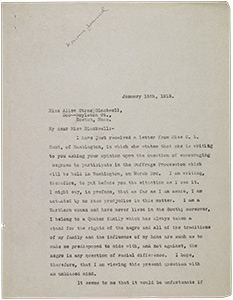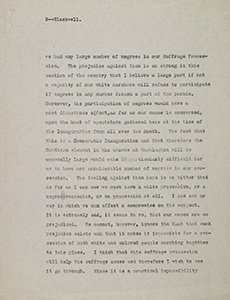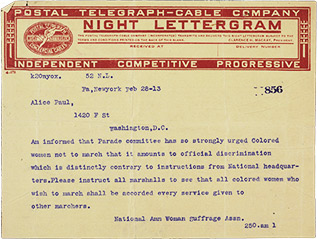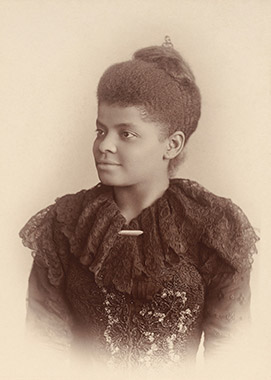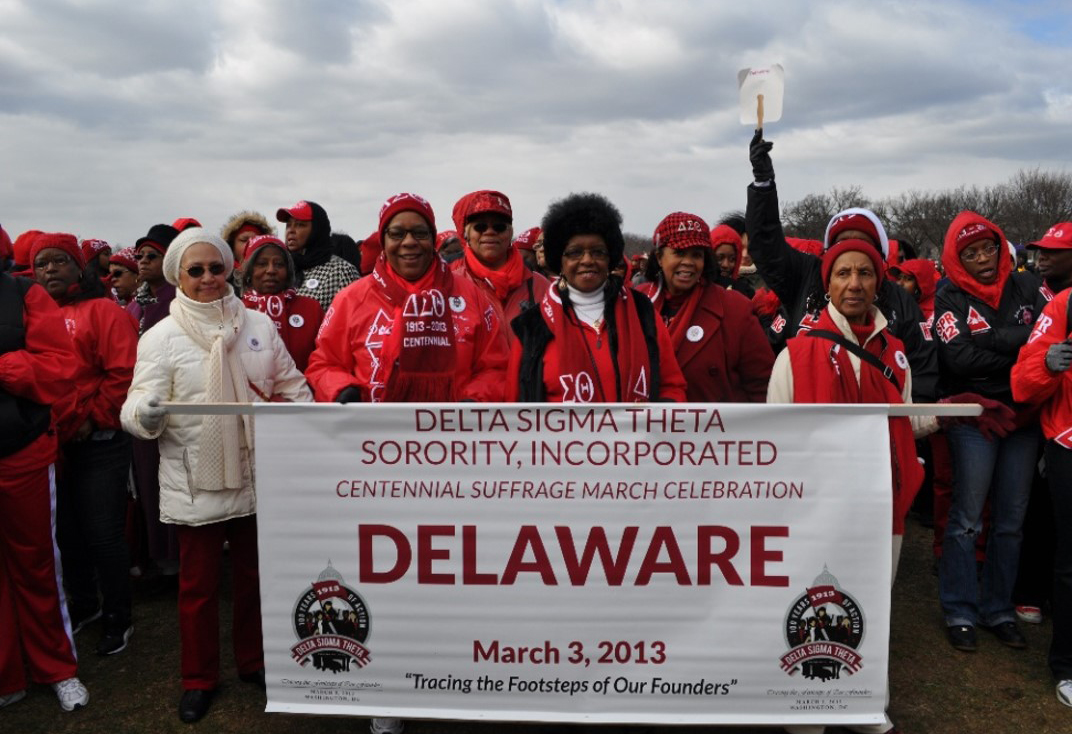Suffrage March
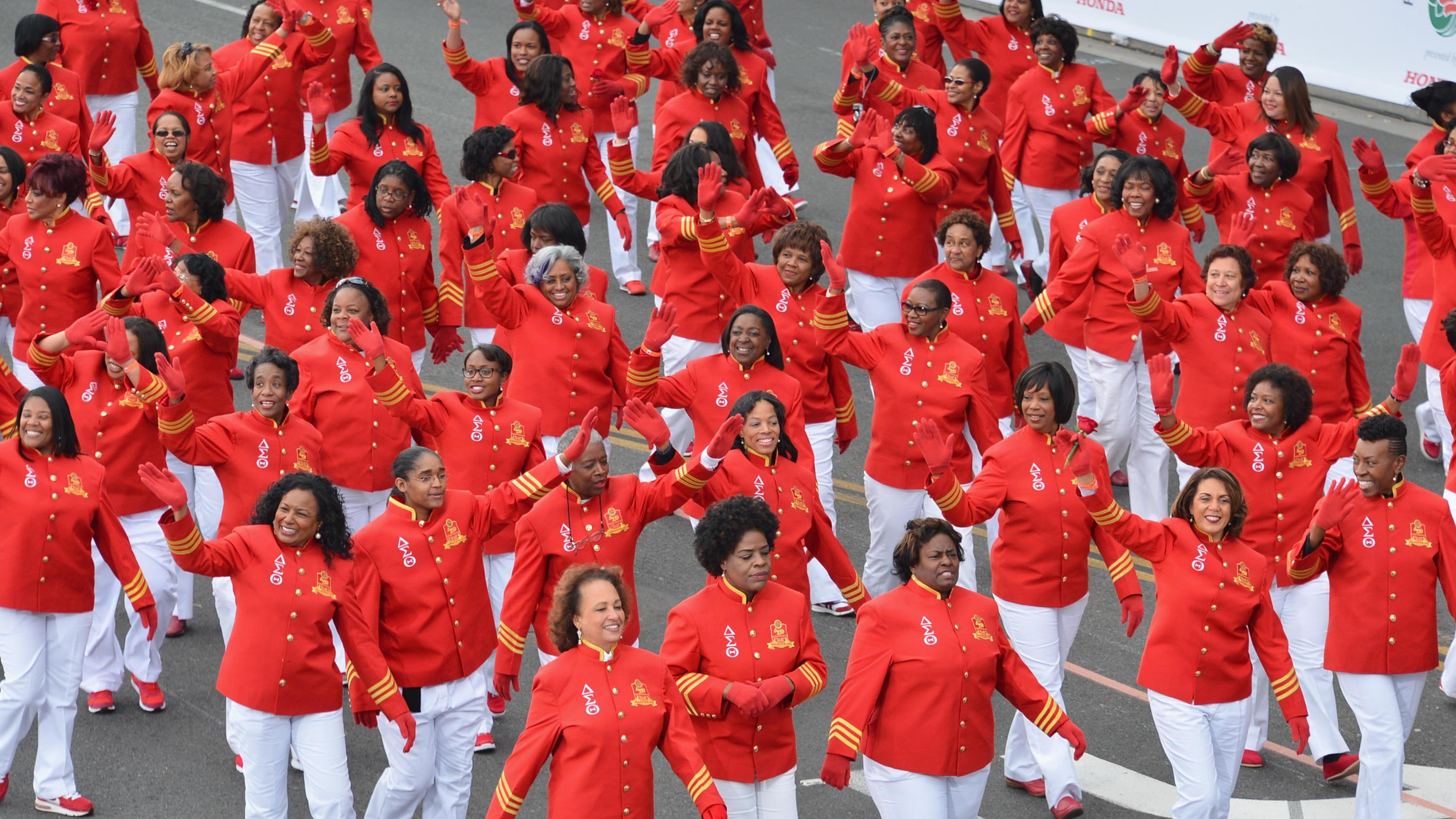
The March for Women's Equality
 March 3, 1913, is another significant date in the history of the
Delta Sigma Theta Sorority. On that day, the newly-founded sorority
performed their first public act of service as the founders marched
in the Woman Suffrage Procession down Pennsylvania Avenue in
Washington, D.C. However, this act of service did not happen without
challenges and, due to the prevalence of segregation at the time,
almost did not happen at all.
March 3, 1913, is another significant date in the history of the
Delta Sigma Theta Sorority. On that day, the newly-founded sorority
performed their first public act of service as the founders marched
in the Woman Suffrage Procession down Pennsylvania Avenue in
Washington, D.C. However, this act of service did not happen without
challenges and, due to the prevalence of segregation at the time,
almost did not happen at all.
This first suffragist parade was largely organized by Alice Paul and Lucy Burns for the National American Woman Suffrage Association (NAWSA). The massive national parade was modeled on preceding elaborate pageants such as the ones in Britain and the marches in New York. The parade was to be held on the eve of President Woodrow Wilson's inauguration, and plans for the parade quickly became tangled in controversy when questions arose as to whether African American women should be allowed to participate due to the risk of losing Southern women’s involvement in the Suffrage Movement.
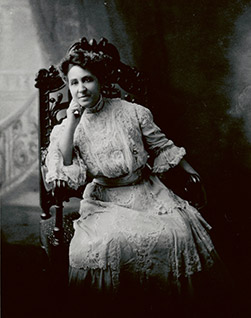 When a group from Howard University, including the founders of Delta
Sigma Theta, requested to join the parade, Alice Paul assigned them
to the college section of the procession. The Howard university
group included Delta Sigma Theta honorary soror and former president
of the National Association of Colored Women's Clubs (NACWC), Mary
Church Terrell.
When a group from Howard University, including the founders of Delta
Sigma Theta, requested to join the parade, Alice Paul assigned them
to the college section of the procession. The Howard university
group included Delta Sigma Theta honorary soror and former president
of the National Association of Colored Women's Clubs (NACWC), Mary
Church Terrell.
Alice Paul discretely reserved space in the parade for the NACWC group and the National Association for the Advancement of Colored People (NAACP). After learning of this, some NAWSA officials attempted to persuade Ms. Paul that including African Americans would be a bad idea. Ms. Paul took their concerns seriously and, out of practicality, considered excluding African Americans from the parade while also attempting to keep news about African American marchers out of the press. However, when Mary Church Terrell's Howard University group announced their intention to participate, the public became aware of this internal conflict.
A newspaper account indicated that, in trying to find a solution to the growing concerns of NAWSA members, Alice Paul told African American suffragists that the NAWSA believed in equal rights for “colored women”, but some Southern women were likely to object to their presence in the parade. Ms. Paul also wrote of her concerns in private correspondence to Alice Stone Blackwell, Editor-in-Chief of The Woman's Journal in Boston, Mass. In one of her letters she noted "that it would be unfortunate if we had any large number of negroes in our Suffrage Procession" in a segregated Washington during the Presidential Inauguration of a Southern Democratic candidate. Ms. Blackwell, in turn, expressed relief that Alice paul had not excluded African Americans but that she hoped for a low turnout "in view of the wicked and irrational color prejudice so prevalent" in Washington. After learning of the Parade committee's possible thoughts of exclusion, NAWSA president Anna Howard Shaw, telegrammed Ms. Paul and ordered her to stop any and all discouragement of African American participation.
Ultimately, African Americans were allowed to participate and in a 1974 interview, Ms. Paul recalled the "hurdle" of Terrell and the Howard University group's plan to march, which upset the Southern delegations. She recalls that the issue was only resolved when someone proposed that men’s suffrage leagues march between the Southern groups African American marchers.
The NAACP newspaper, The Crisis, outlined the parade events differently by reporting that the African American female participants protested the plan to segregate them from the other groups that marched and that African American women marched in different sections throughout the procession.
What is clear is that some groups did attempt to segregate their delegations. For example, Genevieve Stone, the chair of the state delegation section, requested at the last minute that the Illinois delegation’s sole African American member, Ida B. Wells-Barnett, march with a segregated African American group at the back of the parade. Wells-Barnett refused the request and left the area only to come back a short while later as the Illinois group marched past. She then stepped in front of the Illinois delegation and, alongside two white women, continued marching in the procession.
Although it is sometimes reported that that African American women solely marched in the back of the parade, The Crisis reported this not to be the case and that over 40 African American women marched in several state delegations, including New York and Michigan. Some also joined in with their co-workers in the professional groups' sections and two African American women reportedly carried the lead banners for their sections.
"In spite of the apparent reluctance of the local suffrage committee to encourage the colored women to participate," reported The Crisis, "and in spite of the conflicting rumors that were circulated and which disheartened many of the colored women from taking part, they are to be congratulated that so many of them had the courage of their convictions and that they made such an admirable showing in the first great national parade.”
W. E. B. Du Bois - The Crisis
Despite these conflicts and hurdles, the twenty-two sorority founders marched in cap and gown with other university women making Delta Sigma Theta the only African American sorority to participate in the Procession. This historic march became one of the events that helped to solidify the message and passage of the 19th Amendment seven years later.
100th Anniversary March
On Sunday, March 3, 2013, several thousand Delta Sigma Theta Sorority members commemorated the 100th anniversary of the 1913 march and the role the organization’s twenty-two founders played, by recreating the original 5,000 person march down Pennsylvania Avenue. The march was sponsored by Delta Sigma Theta Inc. and included the National Women’s History Museum, the Sewall-Belmont House Museum and the National Organization for Women.
These photos show members of the Delaware Chapters who attended this historical event
